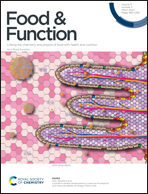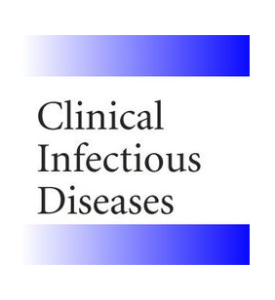 “The antioxidant and CB2 receptor agonist properties of Δ9-tetrahydrocannabivarin (Δ9-THCV) afforded neuroprotection in experimental Parkinson’s disease (PD), whereas its CB1 receptor antagonist profile at doses lower than 5 mg/kg caused anti-hypokinetic effects.
“The antioxidant and CB2 receptor agonist properties of Δ9-tetrahydrocannabivarin (Δ9-THCV) afforded neuroprotection in experimental Parkinson’s disease (PD), whereas its CB1 receptor antagonist profile at doses lower than 5 mg/kg caused anti-hypokinetic effects.
In the present study, we investigated the anti-dyskinetic potential of Δ9-THCV (administered i.p. at 2 mg/kg for two weeks), which had not been investigated before.
In summary, our data support the anti-dyskinetic potential of Δ9-THCV, both to delay the occurrence and to attenuate the magnitude of dyskinetic signs. Although further studies are clearly required to determine the clinical significance of these data in humans, the results nevertheless situate Δ9-THCV in a promising position for developing a cannabinoid-based therapy for patients with PD.”
https://www.ncbi.nlm.nih.gov/pubmed/32387338
“Δ9-THCV exhibited anti-dyskinetic properties in L-DOPA-treated Pitx3ak mutant mice. It delayed the onset of dyskinetic signs and reduced their neurochemical changes. It also reduced their intensity when given once dyskinesia was already present. This potential adds to other properties of Δ9-THCV as antiparkinsonian therapy.
In summary, our data support the anti-dyskinetic potential of Δ9-THCV to ameliorate adverse effects caused by L-DOPA, in particular delaying the occurrence and attenuating the magnitude of dyskinetic signs. This adds to its promising symptom-alleviating and neuroprotective properties described previously. Although further studies are clearly required to determine the clinical significance of these data in humans, the results nevertheless situate Δ9-THCV in a promising position for developing a cannabinoid-based therapy for PD patients.”
https://www.sciencedirect.com/science/article/pii/S0969996120301674?via%3Dihub

 “Hempseed (Cannabis sativa L.) has beneficial impact on human health mainly because of its wide variability of bioactive compounds. However, many of them are not fully characterized yet. In this work, hempseed was defatted and through a bio-guided studied, two fractions (F03 and F05) with the highest content of phenols, flavonoids and antioxidant capacity were selected. Fractions were chemically analyzed by UHPLC HRMS/MS. The anti-inflammatory capacities of these compounds were evaluated on human monocytes using flow cytometry, RT-qPCR and Elisa procedures. A high amount of phenolic compounds were identified, with the major compound being: N-trans-caffeoyltyramine (6.36 mg g-1 in F05 and 1.28 mg g-1 in F03). Both, F03 and F05 significantly reduced the inflammatory competence of LPS-treated human primary monocytes, decreasing TNF-α and IL-6 gene expression and secretion. These findings indicate that in the defatted fraction of the hempseed there are a wide number of compounds with beneficial potential to prevent and treat inflammatory disorders, as well as other processes caused by oxidative stress.”
“Hempseed (Cannabis sativa L.) has beneficial impact on human health mainly because of its wide variability of bioactive compounds. However, many of them are not fully characterized yet. In this work, hempseed was defatted and through a bio-guided studied, two fractions (F03 and F05) with the highest content of phenols, flavonoids and antioxidant capacity were selected. Fractions were chemically analyzed by UHPLC HRMS/MS. The anti-inflammatory capacities of these compounds were evaluated on human monocytes using flow cytometry, RT-qPCR and Elisa procedures. A high amount of phenolic compounds were identified, with the major compound being: N-trans-caffeoyltyramine (6.36 mg g-1 in F05 and 1.28 mg g-1 in F03). Both, F03 and F05 significantly reduced the inflammatory competence of LPS-treated human primary monocytes, decreasing TNF-α and IL-6 gene expression and secretion. These findings indicate that in the defatted fraction of the hempseed there are a wide number of compounds with beneficial potential to prevent and treat inflammatory disorders, as well as other processes caused by oxidative stress.” “HIV infection leads to blood-brain barrier (BBB) dysfunction that does not resolve despite viral suppression on antiretroviral therapy and is associated with adverse clinical outcomes.
“HIV infection leads to blood-brain barrier (BBB) dysfunction that does not resolve despite viral suppression on antiretroviral therapy and is associated with adverse clinical outcomes. “Cannabis has been used for thousands of years in many cultures for the treatment of several ailments including pain.
“Cannabis has been used for thousands of years in many cultures for the treatment of several ailments including pain. “Cannabis sativa, commonly known as marijuana, contains a pool of secondary plant metabolites with therapeutic effects.
“Cannabis sativa, commonly known as marijuana, contains a pool of secondary plant metabolites with therapeutic effects. “The synthetic atypical cannabinoid Abn-CBD, a
“The synthetic atypical cannabinoid Abn-CBD, a 

 “A growing body of literature indicates that activation of
“A growing body of literature indicates that activation of